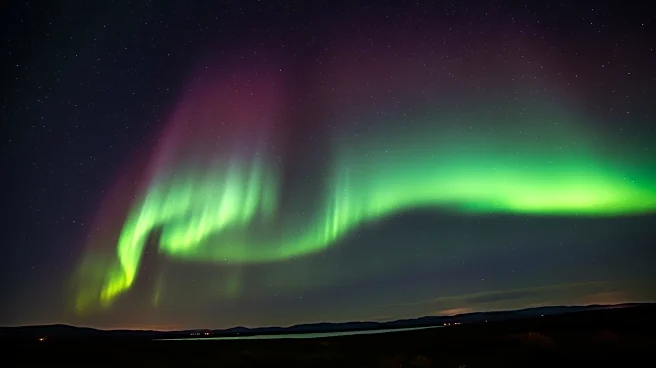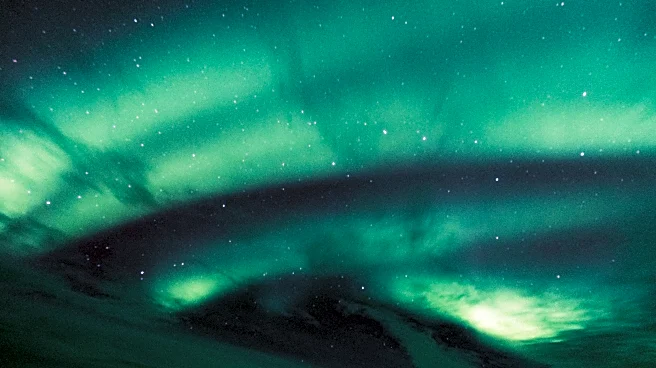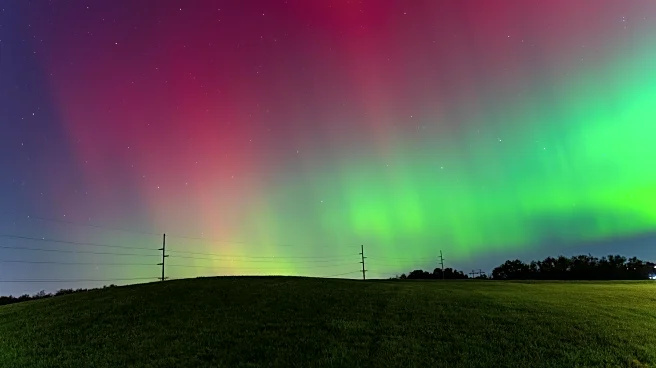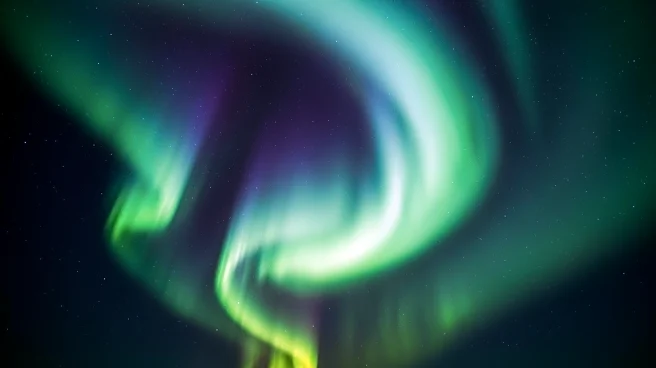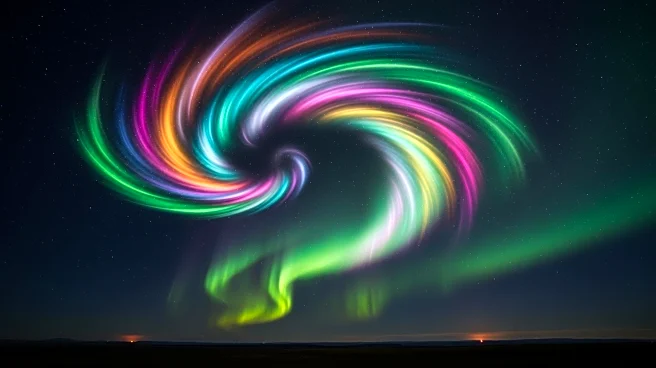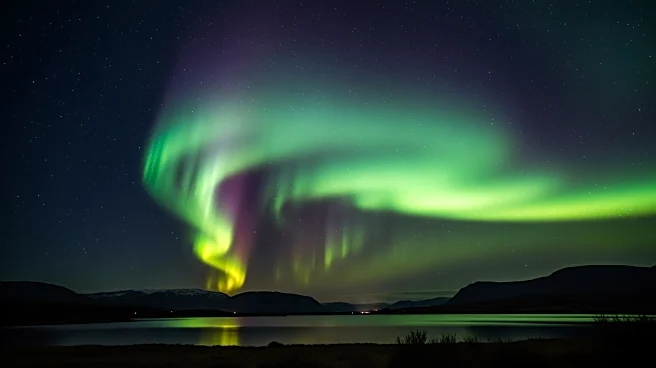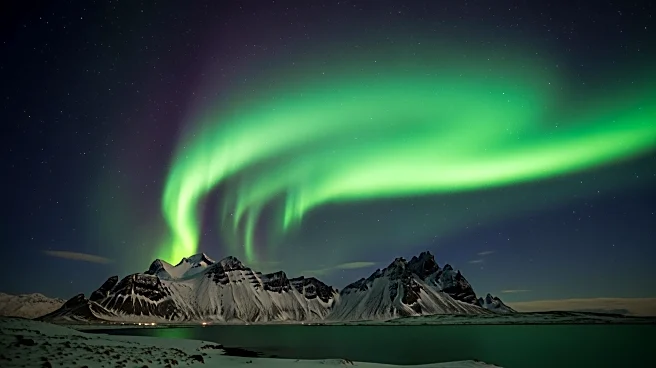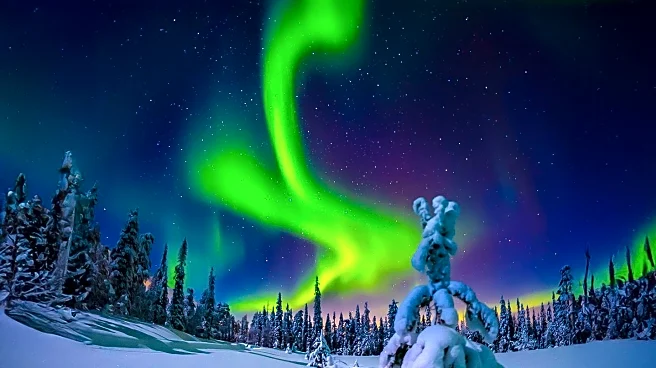What's Happening?
A severe geomagnetic storm, classified as G4, illuminated the skies across North America, with auroras visible as far south as Mexico. This event followed the arrival of multiple coronal mass ejections
(CMEs) from sunspot AR4274, marking one of the most energetic sunspot groups of the current solar cycle. The storm ranks among the strongest of Solar Cycle 25, with last night's peak being the third strongest geomagnetic storm of this cycle. The first two CMEs struck in quick succession, compressing Earth's magnetic field and creating spectacular aurora displays. A third CME, released during an X5.1 solar flare, is expected to arrive soon, potentially causing further strong to severe geomagnetic conditions.
Why It's Important?
The occurrence of such strong geomagnetic storms can have significant implications for various sectors. GPS services, which are crucial for navigation and agriculture, may experience disruptions. Additionally, the visibility of auroras in regions as far south as Mexico is rare, indicating the intensity of the solar activity. This event highlights the need for preparedness in industries reliant on satellite communications and navigation systems. The storm also offers a unique opportunity for skywatchers and photographers to capture rare aurora displays, contributing to public interest in space weather phenomena.
What's Next?
The arrival of the third CME could lead to extreme geomagnetic conditions, potentially pushing auroras even farther south. NOAA and the U.K. Met Office are monitoring the situation closely, with forecasts suggesting continued strong geomagnetic activity. Stakeholders in affected industries may need to implement contingency plans to mitigate potential disruptions. Skywatchers are advised to keep their cameras ready for another possible round of aurora displays.
Beyond the Headlines
The event underscores the importance of understanding space weather and its impacts on Earth. As solar activity increases, the frequency and intensity of geomagnetic storms may rise, necessitating advancements in forecasting and mitigation strategies. This could lead to increased investment in space weather research and technology development.
